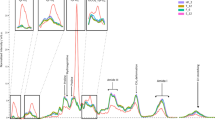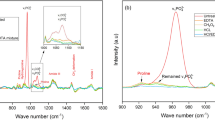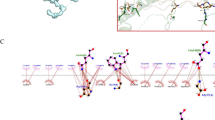Abstract
DEMINERALIZATION of specimens for the preparation of histological sections is a time-consuming process. Mineral acids demineralize the specimens faster than chelating agents or organic acids, but the resultant distortion in cellular morphology is greater when mineral acids are used. The rate of demineralization depends mainly on the temperature and concentration of the acid, but since cellular definition and enzymes are adversely affected if the temperature is raised, or when the concentration of the acid is increased, demineralization is usually carried out below or at room temperature and a concentration of mineral acid above 5 per cent of commercial nitric acid (55 per cent) is seldom used. Under these conditions even small specimens of bone must be immersed in acid for days before they are completely demineralized. For teeth, the period of time runs into weeks.
This is a preview of subscription content, access via your institution
Access options
Subscribe to this journal
Receive 51 print issues and online access
$199.00 per year
only $3.90 per issue
Buy this article
- Purchase on SpringerLink
- Instant access to full article PDF
Prices may be subject to local taxes which are calculated during checkout
Similar content being viewed by others
Author information
Authors and Affiliations
Rights and permissions
About this article
Cite this article
DREYER, C. Demineralization of Bone. Nature 207, 94 (1965). https://doi.org/10.1038/207094a0
Issue date:
DOI: https://doi.org/10.1038/207094a0



